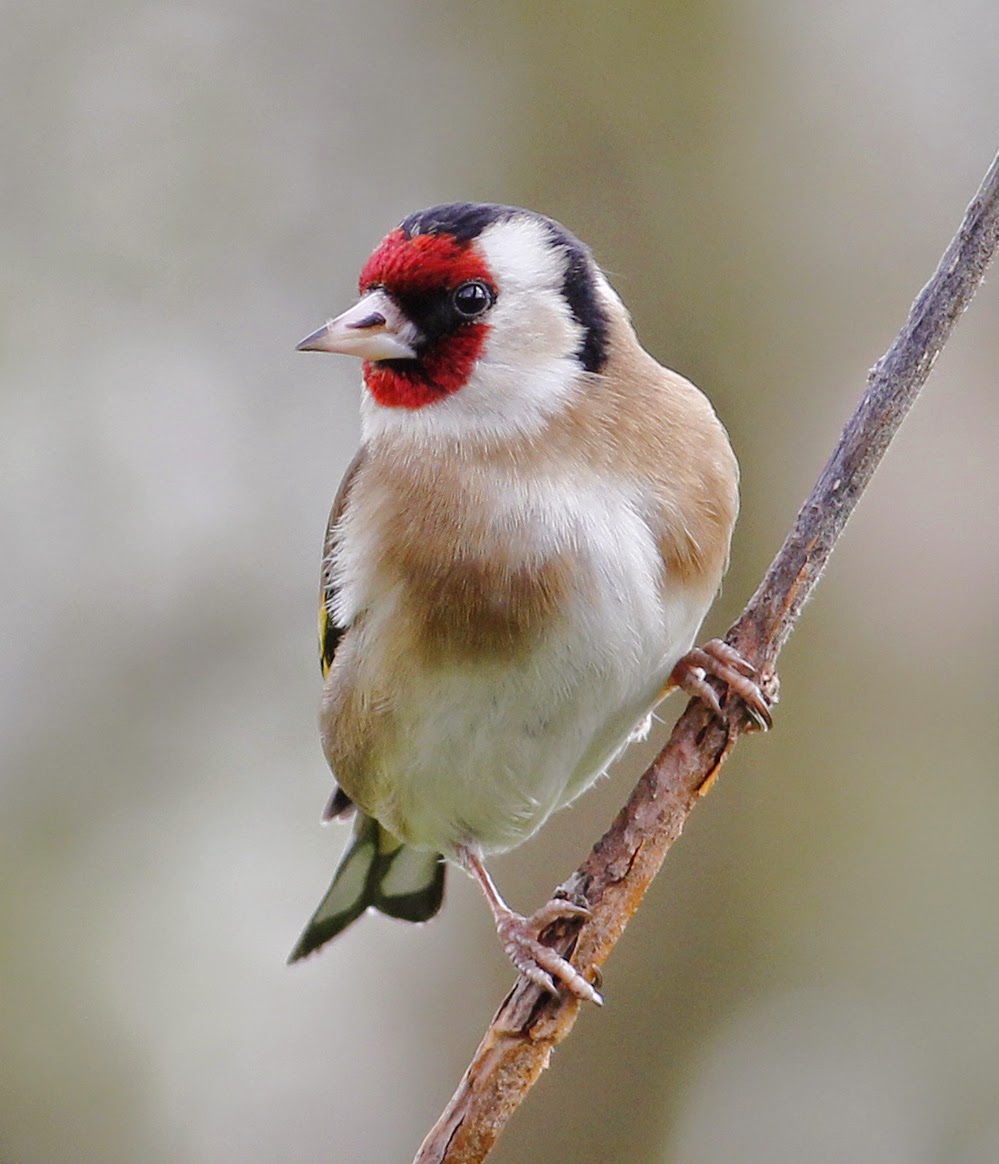There isn’t much to report from this morning’s grey affair. A shimmy around Conder Green on my way to business in Lancaster produced the usual wildfowl fayre of 90 Teal, 30 Wigeon, 6 Shelduck, 4 Tufted Duck, 2 Goldeneye, 2 Little Grebe, 2 Canada Goose, 2 Goosander, 2 Cormorant and 1 Little Egret.
Lapwings and Oystercatchers were on the spot for breeding around the margins with 30 or so Redshank, 1 Spotted Redshank and 2 Snipe.
Common Snipe
As compensation for today’s meagre entry here’s an item from the Washington Post about Political Correctness reaching bird watching. Let me just check - no, today isn’t April 1st.
"Bird watching has long been a popular and seemingly harmless weekend activity in Sweden. Its innocence, however, came to an abrupt end when many of the country's bird lovers were suddenly confronted with allegations of racism.
For centuries, it has now been revealed, the Swedish had given birds some names that now could be considered offensive to certain groups. One species, for instance, was called "gypsy bird," whereas another was named "negro." The insult "caffer," which was used by white against blacks in South Africa, also resembled a Swedish bird species called "kaffer." There were other offensive bird names in Sweden, such as "Hottentot" — apparently inspired by the name of the language of an indigenous southwest African tribe called Khoikhoi, yet also a derogatory term for that tribe.
Despite the prominence of bird watching among Swedes, the existence of these names and others like them had sparked little outrage and publicity until recently. When Sweden's Ornithological Society completed its first-ever global list of all 10,709 Swedish bird names two weeks ago, the organization also announced some awkward name changes.
In the process of categorizing the names, staffers had raised concerns over some that had a potentially offensive nature. As a result, several of them have now been changed: "negro" bird, for instance, will now be called "black" bird. "When working on the list, it became obvious that some older names no longer were appropriate," Anders Wirdheim, Communications Officer at the Swedish Ornithological Society told The Washington Post.
Wirdheim does not think that the bird names should be used to draw broader conclusions about the Swedish society. "Out of thousands of names, there were only 10 which could be understood as condescending or even racist," he said. Nevertheless, Sweden's Ornithological Society was surprised by how serious some have taken the racism allegations. "We had expected a few responses, but certainly not the flood of comments that followed the publication," Wirdheim said.
"Here in Sweden, an overwhelming majority is for the changes we have implemented. However, the news has reached far beyond our borders and most outraged reactions have come from abroad."
Blackbird
Naturally it’s only a matter of time before the European Union directs the UK to rename some offensively titled British birds.
For a start our UK field guides are full of Tits not to mention a Shag, which makes it very embarrassing to discuss these species with non-UK birders. There’s the very impolite Dusky Warbler or Dusky Thrush, an abusive Sooty Shearwater or Sooty Tern and more than enough thank you of birds called “Yellow”, “Brown” or “White”. Thankfully the Martians haven’t arrived yet so for now we can forget all those “Green” birds.
Great Tit
Yellow Wagtail
Then there are those species which have to be reminded they are of diminished stature by the use of the word “Little” or “Least”, or of less than ideal physical proportions, or with a disability, and therefore labelled with a derogatory prefix - “Long-eared”, “Short-eared”, “Short-toed” or ”Long-toed” come to mind. And in these days of equality should we really refer to some bird species as “Common”, implying they are of a lowly class and that similar but less numerous species are superior?
Short-toed Lark
Common Gull
And to precede so many of our British bird names with the adjective “Lesser” implies that the species is not of equal importance to its “Greater” relative when it clearly is. Be honest. Which would you rather see? A Greater White-fronted Goose or a Lesser White-fronted Goose? Me too.
Lesser White-fronted Goose - CC BY-SA 3.0 via Wikimedia Commons
Swans are very beautiful and graceful creatures. I suggest to readers that in 2015 it is no longer acceptable to begin the naming of our commonest British swan with the archaic term “Mute”. Surely “Inability To Speak Swan” would be more acceptable”?
Mute Swan
Although not strictly speaking a British bird, the Bufflehead finds itself on the British List by virtue only of its rare transatlantic appearances here in the UK. Is that any reason to call an American cousin a “Bufflehead”? It is a word clearly designed to offend.
Yes, it is definitely time to bring British Birds into the modern world of equality, diversity and tolerance.
Suggestions for the New British List of Birds on a postcard please to Presidency of The European Union, Strasbourg, France.
Linking today to
Anni's Birds.





















































.jpeg)











.jpg)












